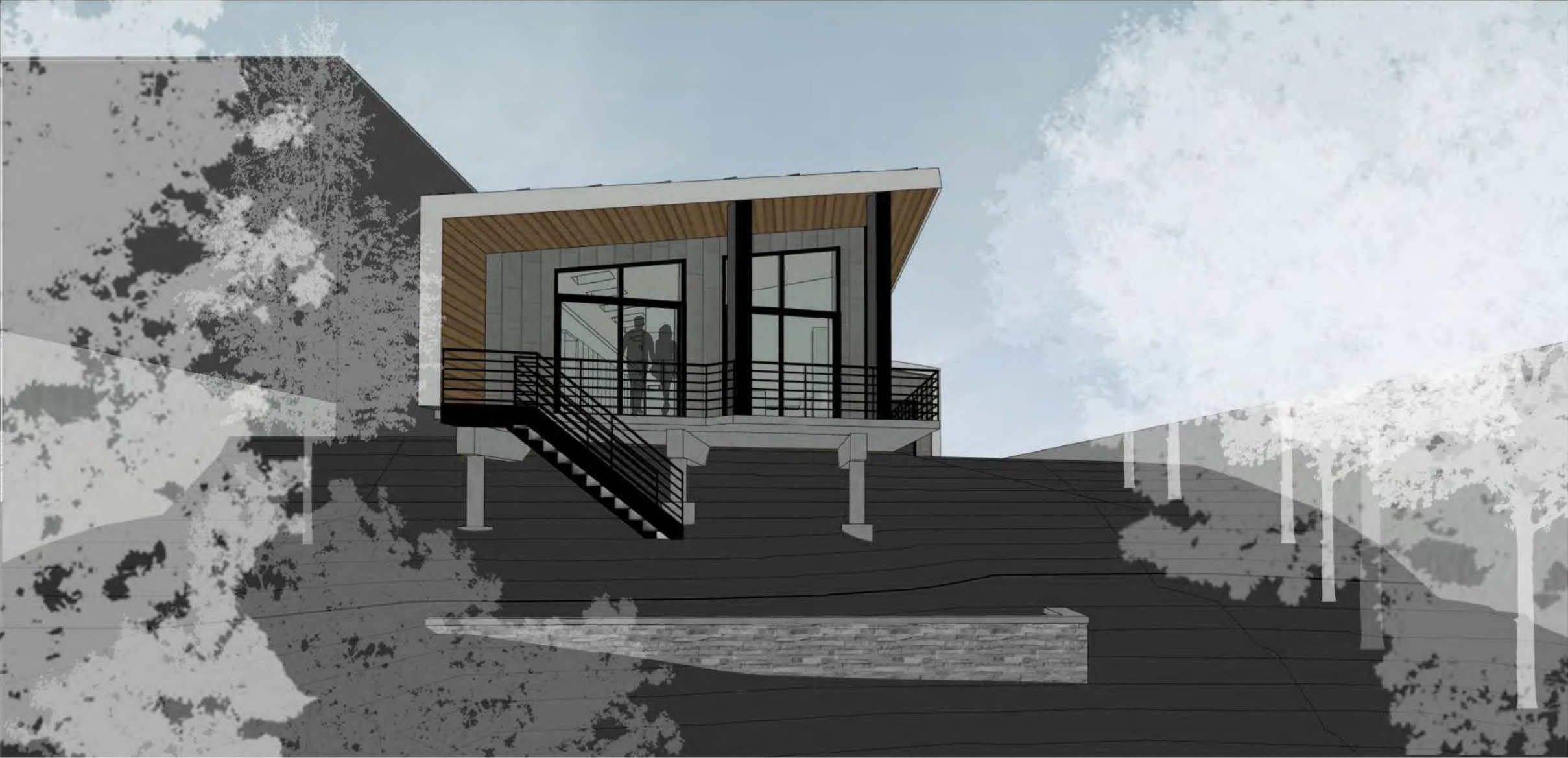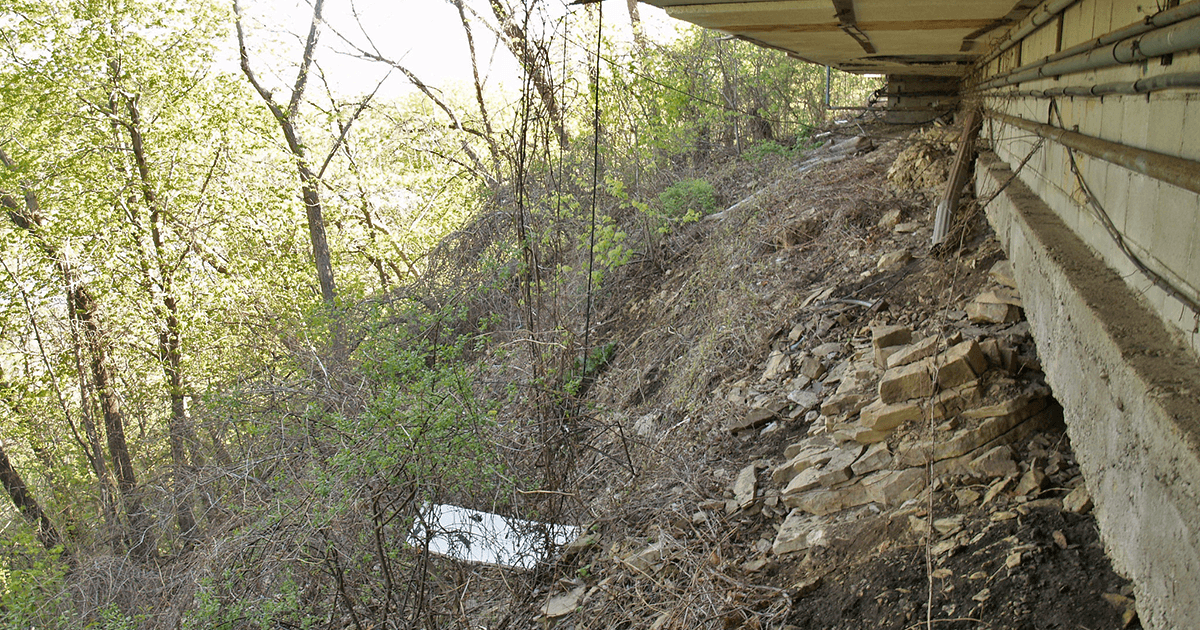Judge tells Minneapolis to comply with its riverfront development rules

A proposed building overlooking the Mississippi River disregards bluff erosion and river health. (Image by Shelter Architecture)
Update: March 2025
A district court judge recently ruled in favor of the Minnesota Department of Natural Resources, preventing a proposed development on the edge of an erosion-prone bluff in Minneapolis.
In her ruling, Judge Rachna Sullivan noted that the city council improperly granted the variance based on the property owner's willingness to sell the parcel to the Minneapolis Park and Recreation Board sometime in the future.
As we said at the time, that decision was illegal. A variance must be considered only according to the criteria set out in law. This project did not meet those criteria, and the Minneapolis city council erred in approving it based on other factors, like a possible future sale.
The river prevailed in this important first test of the MRCCA ordinances that FMR has spent 15 years advocating for. We appreciate the DNR's commitment to enforcing these vital riverfront protections.
Our previous update, laying out our concerns, is below.
---
DNR sues Minneapolis over riverfront development rules
(Originally published February 2024)
A riverfront property owner in Northeast Minneapolis plans to build a new home on the edge of an erosion-prone bluff — breaking the rules Minneapolis recently adopted to protect the river. The city says that's just fine, but FMR and the Department of Natural Resources disagree.
Since our founding, FMR has led the call to manage our metro riverfront land in a consistent, clear and science-based way. After many years of advocacy, our work culminated in updated protective rules for the entire Mississippi River Corridor Critical Area. Minneapolis was among the first communities to adopt them. Now they're being put to the test.
To date, no one has explained why the new house cannot be set back the required distance (40 feet) from the bluff’s edge. We understand the occasional need to make exceptions to the rules (or variances), but an owner's desire for a river view and an oversized garage shouldn’t make the cut, let alone set a bad precedent for future projects in and beyond the city.
Proposed bluff home doesn't merit an exemption
In 2021, a property owner on Marshall Street Northeast requested city approval to build a large garage and an additional single-family home on their riverfront lot, which already contains a duplex.
With the right design, this large lot could certainly accommodate the additional density. However, the owner wants to build their new home right on the edge of the river bluff, with zero setback from the bluff's edge. According to the city ordinance and state rules, the home should be set back 40 feet.
Bluff setbacks protect sensitive habitat areas and scenic views. Without setbacks, blufftop development can exacerbate erosion and put water quality at risk. And as climate change brings more extreme rainstorms, preventive measures against erosion are even more important.
Bluff setbacks also protect the buildings themselves. Elsewhere along the riverfront, buildings set on the edges of erosion-prone bluffs have deteriorated and developed structural issues.
We don't believe that this project requires this extreme setback exemption (known as a variance), and we don't believe that the property owner or city has substantiated the requirements (called findings) that the ordinance says any variance must meet.
These findings must conclude that a variance is consistent with critical area goals; that it won't harm bluffs, scenic views, native vegetation stands or other special river resources; and that it's needed due to a "practical difficulty" in complying with requirements.
This house could be located elsewhere on the lot in proper compliance with setback requirements. No one has explained why that can't be done and why a zero-foot bluff setback is a necessary and reasonable alternative. It seems that this blufftop home is based on the owners' desire for a river view and an oversized garage, neither of which is legal grounds for a variance.

Buildings built on bluffs like this one accelerate erosion issues that place structures, habitat and water quality at risk.
City approved project despite opposition
FMR and other riverfront partners — including the National Park Service, the Minnesota Department of Natural Resources (DNR) and neighbors — have consistently stated opposition to this bluff setback variance.
In fact, when the Minneapolis Planning Commission approved this project in 2021, we appealed to the Minneapolis City Council and prevailed, stopping the project. But that wasn't the end of the challenge to this protective riverfront bluff setback rule.
Last year, the property owner again sought approval for the same project without modifications to the plan. Though the planning commission denied the variance based on testimony from FMR and others, the applicant appealed to the city council. This time, the council granted the appeal, allowing the project to proceed.
We believe that the council granted this appeal in error without proper consideration for the clear requirements a bluff setback variance must meet.
Councilmembers pushed the property owner to complete an agreement with the Minneapolis Park and Recreation Board about possible public ownership of the property at some undefined point in the future. The council even implied that they would approve the bluff setback variance if this agreement were in place, and later proceeded to do just that.
But the law is clear: The city must evaluate the variance based only on the required findings in its ordinance, not on other factors like future property ownership.
The latest twist: court case underway
On Jan. 30, 2024, the DNR appealed the city's project approval to the Hennepin County District Court. We appreciate the DNR's leadership in filing a lawsuit to correct the city's error in judgment.
We don't know when this case will be decided or what the next steps may be.
We do know that no one should get to build their home over the edge of a river bluff simply because they prefer to. This area of the Northeast Minneapolis riverfront has suffered from extensive industrialization, which is all the more reason to hold ourselves to a high standard for future development rather than pile on further harm.
We hope the city of Minneapolis and other riverfront communities will learn from this case and treat their new riverfront development requirements, the fruits of years of community-based advocacy and input, with the full respect they deserve.
Become a River Guardian
Sign up and we'll email you when important river issues arise. We make it quick and easy to contact decision-makers. River Guardians are also invited to special social hours and other events about legislative and metro river corridor issues.